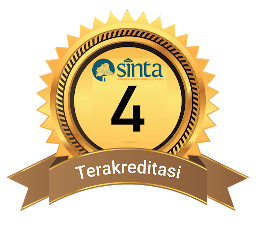Development of Student Activity Sheets with a Scientific Approach on Hydrocarbons and Petroleum Topics
DOI:
10.29303/cep.v7i1.4088Published:
2024-05-31Issue:
Vol. 7 No. 1 (2024): Edisi Mei 2024Keywords:
Development, student activity sheet, scientific approachArticles
Downloads
How to Cite
Abstract
This study aims to determine the validity and practicality of student activity sheets with a scientific approach to hydrocarbon and petroleum materials for class XI High School that have been developed. This type of research is a research and development R&D (Research and Development) 4D model offered by Thiagarajan which consists of four stages, namely the definition stage, the design stage, the development stage and the dissemination stage. LKPD validation is carried out by validators. The results show that the validity of the LKPD that has been assessed by the validators in the content aspect is in the very valid category with an average percentage value of 88.3%, the display aspect is 88.19% with a very valid category, the language aspect is 91.7 % with a very valid category, and aspects of use and presentation of 82.14% with a fairly valid category. The practicality of the LKPD is known from the student response questionnaires. The results of the student response questionnaire obtained an average percentage value of 82% with a very practical category. The results of this study indicate that the student activity sheet with a scientific approach to the material of hydrocarbons and petroleum in class XI High School which was developed is valid and practical to be used as teaching material in chemistry learning in class.
References
Adawiah, R. (2019). Pengembangan Lembar Kerja Peserta Didik (LKPD) Berbasis Saintifik pada Peserta Didik Kelas XI SMA Negeri 5 Makassar.UNM Jurnal, 1-10.
Akbar. (2013). Instrumen Perangkat Pembelajaran. Bandung: Rosda.
Amalia, A. (2018). Pengembangan Lembar Kerja Peserta Didik (LKPD) Berbasis Think Talk Write (TTW) pada Materi Hidrokarbon untuk Kelas XI IPA MA Al-Mustaqim. Pontianak: Universitas Muhammadiyah .
Asnaini. (2016). Pengembangan LKPD Berbasis Pendekatan Saintifik Untuk Meningkatkan Hasil Belajar dan Aktivitas Peserta Didik pada Materi Larutan Penyangga. Lantanida Jurnal, 61-71.
Apriyanti, R. (2019). Pengembangan Bahan Ajar Berbasis Pendekatan Saintifik pada Pembelajaran Tematik. Lampung: Universitas Lampung.
Depdiknas. (2008). Panduan Penyusunan Bahan Ajar. Jakarta: Depdiknas.
Dewi, S. (2019). Pendekatan Saintifik dalam Peningkatan Keaktifan Siswa pada Pembelajaran Agama Islam di SMA. Journal of Islamic Education, 2, 212-229.
Mardiana, E. (2018). Pengembangan Bahan Ajar Berbasis Pendekatan Saintifik Meningkatkan Kemampuan Literasi Matematika Siswa. Journal Unnes,87-91.
Prastowo, A. (2011). Panduan Kreatif Membuat Bahan Ajar Inovatif: Menciptakan Metode Pembelajaran yang Menarik dan Menyenangkan. Yogyakarta: Diva Press.
Putri, I. P. (2011). Hubungan Persepsi Terhadap Kompetensi Kepribadian Guru dengan Keterlibatan Belajar Siswa. Surakarta: Universitas Muhammadiyah.
Riduwan. (2009). Belajar Mudah Penelitian Guru, Karyawan dan Peneliti Pemula. Bandung: Alfabeta.
Salirawati, D. (2007). Penyusunan dan Kegunaan LKS dalam Proses Pembelajaran. Dipetik Februari kamis, 2019, dari http://staff. uny. ac.id/ sites/default/files/pengabdian/das-salirawati-msi dr/ 19 penyusunnan-dan-kegunaan-lks.
Trianto. 2011. Model Pembelajaran Terpadu. Jakarta: Bumi Aksara.
Umbaryati. (2018). Pentingnya LKPD pada Pendekatan Saintific Pembelajaran Matematika. Lampung: Universitas Lampung.
Wasonowati, R. R., Redjeki, T., & Ariani, S. R. (2014). Penerapan Model Problem Based Learning (PBL) pada Pembelajaran Hukum-Hukum Dasar Kimia Ditinjau dari Aktifitas dan Hasil Belajar Sisiwa Kelas X IPA Siswa SMA Negeri 2 Surakarta Tahun Pelajaran 2013/2014. Jurnal Pendidikan Kimia, 3, 66-75.
Widjayanti. (2008). Media Lembar Kerja Peserta Didik. Jakarta: Rineka.
Widodo, S. (2017). Pengembangan Lembar Kegiatan Peserta Didik (LKPD) berbasis Pendekatan Saintifik untuk Meningkatkan Keterampilan Penyelesaian Masalah Lingkungan Sekitar Peserta Didik di Sekolah Dasar. Jurnal Pendidikan Ilmu Sosial, 2, 189-204.
Zulbaidah. (2017). Pengembangan Lembar Kerja Siswa (LKS) dengan Pendekatan Saintifik pada Materi Koloid di SMAN 1 Bubon. Banda Aceh: Universitas Negeri Islam Ar-Raniry Darussalam.
Author Biographies
Bq Hartina, Universitas Mataram
Dwi Laksmiwati, Program Studi Pendidikan Kimia, FKIP, Universitas Mataram
Yunita Arian Sani Anwar, Pendidikan Kimia, FKIP, Universitas Mataram
License
Copyright (c) 2024 Bq Hartina, Dwi Laksmiwati, Yunita Arian Sani Anwar

This work is licensed under a Creative Commons Attribution-ShareAlike 4.0 International License.
Authors who publish with Chemistry Education Practice agree to the following terms:
- Authors retain copyright and grant the journal right of first publication with the work simultaneously licensed under a Creative Commons Attribution License 4.0 International License (CC-BY-SA License). This license allows authors to use all articles, data sets, graphics, and appendices in data mining applications, search engines, web sites, blogs, and other platforms by providing an appropriate reference. The journal allows the author(s) to hold the copyright without restrictions and will retain publishing rights without restrictions.
- Authors are able to enter into separate, additional contractual arrangements for the non-exclusive distribution of the journal's published version of the work (e.g., post it to an institutional repository or publish it in a book), with an acknowledgement of its initial publication in Chemistry Education Practice.
- Authors are permitted and encouraged to post their work online (e.g., in institutional repositories or on their website) prior to and during the submission process, as it can lead to productive exchanges, as well as earlier and greater citation of published work (See The Effect of Open Access).






